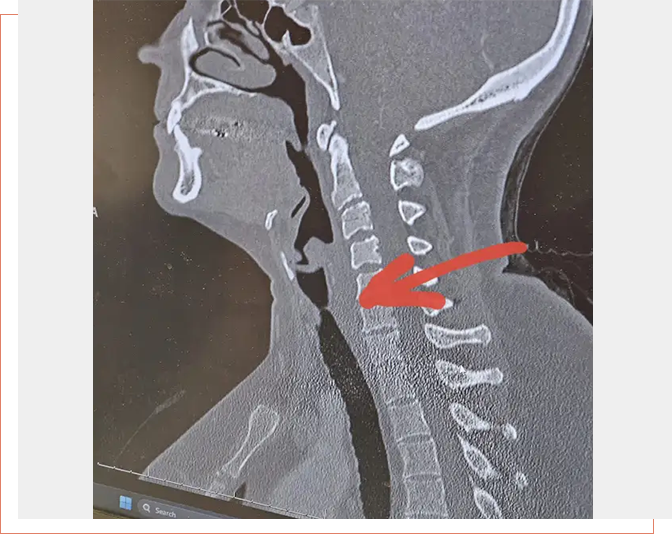
Championing Critical Measures in Anesthesia and Surgery
As an anesthesia provider, we have the privilege of providing care to patients during surgery, and with that privilege comes responsibility for their welfare. Because of this privilege and responsibility, the Foundation To Prevent Harm in Anesthesia and Surgery is dedicated to raising awareness about critical aspects of patient safety. Our focus is on three key pillars: maintaining blood flow to the brain, ensuring blood flow to the trachea (windpipe), and preventing infections.
Requirement for New Standards
Focus Area: Prevent Subglottic Stenosis
One of the core areas of our focus is on the pitfalls of anesthesia, particularly the risks associated with routine adult endotracheal tube (ETT) practices in the operating room. Two common practices, blind inflation of pilot balloons and the use of large-sized endotracheal tubes, especially for women, have been identified as potential sources of harm to patients.
Effects of These Practices
The symptoms of SGS include progressive shortness of breath, voice changes, frequent coughing/throat clearing and a wheeze or stridor from the neck. Stenosis is frequently misdiagnosed as asthma, reflux, sinus problems, anxiety and many others for many years prior to the discovery of the narrowing directly under the vocal cords (where the cuff of the ETT sits).
Our Approach
To address these issues, we propose the following new standards: monitoring of cuff pressure with monitor cuff pressure with a cuff manometer with every intubation. Standardization of tube sizes downsize to less than size 7 for women and no larger than 7.5 – 8.0 for men. We will provide detailed descriptions of routine care practices, supported by the latest research, to demonstrate the necessity of these new standards. While the citations provided are not exhaustive, they offer a comprehensive overview of the evidence supporting research based recommendations.
Our Mission and Vision
At the Foundation To Prevent Harm in Anesthesia and Surgery, we are committed to promoting patient safety through education, advocacy, and the implementation of best practices. Join us in our mission to ensure that every patient receives the safest and most effective care possible. Together, we can build a foundation for safer anesthesia and surgery practices.
Our vision is a healthcare system where patient safety is paramount, and every individual is empowered to advocate for their own well-being. We strive for a future where preventable harm in anesthesia and surgery is a thing of the past, allowing patients to undergo procedures with confidence and peace of mind.
Things to Discuss With Your Anesthesia Team
- Please keep my blood pressure at no less than 20% of my normal during surgery. Since every surgery is different, ask your team if there is any reason to lower your blood pressure during surgery.
- Please use a smaller sized ETT for me since research shows smaller ETTs have less damage in women (6-6.5).
- You must use a cuff manometer to check my cuff pressure to make sure it is within the safety range of 20-30 cm H₂O pressure. This should be nonnegotiable.
- To prevent infection, wash your hands before caring for me, including cleaning under your fingernails. Use alcohol pads to wipe off IV ports and keep me warm and my temperature normal in the operating room.

Monitoring ETT Cuff Pressure
At the Foundation To Prevent Harm in Anesthesia and Surgery, we emphasize the importance of monitoring endotracheal tube (ETT) cuff pressure to prevent complications. Over-inflated cuffs can lead to serious issues such as ischemia, necrosis, and subglottic stenosis. To address these risks, we advocate for new safety standards in anesthesia.
The Risk of Over-Inflation
Cuff pressure above 30 cm H₂O pressure begins to compromise tracheal perfusion with total occlusion at pressures above this. This high pressure shuts off the blood supply, leading to ischemia, then necrosis and the development of scar tissue. This scar tissue gradually and progressively narrows the trachea and is subglottic stenosis.
The Solution
Mandated standards are needed to check cuff pressure with a cuff manometer with every intubation and to use the right size ETT for the size of the tracheal diameter. One size ETT does NOT fit all!
What You Should Do
As a patient, insist a cuff manometer is used and the pressure is documented to keep the blood supply intact to the trachea. Insist the ETT used correlates to your tracheal diameter. Always obtain a copy of your anesthesia records to make sure these things were done.
Myth Busting
Arguments against the arguments in support of “routine anesthesia practice” (size 7 ETT for women and the injection and palpation technique of cuff inflation) and why they are wrong.
FALSE: All research shows damage begins within 15 minutes of high cuff pressure.
Join Us
Join us in our mission to prevent harm in anesthesia and surgery. Together, we can make a difference and ensure that every patient receives the safe, high-quality care they deserve. Have further questions? Contact me now.

